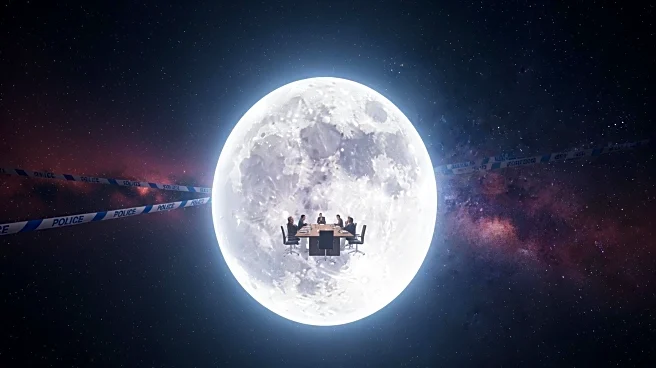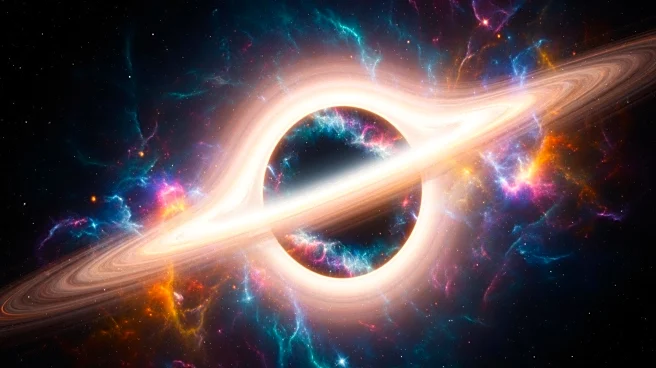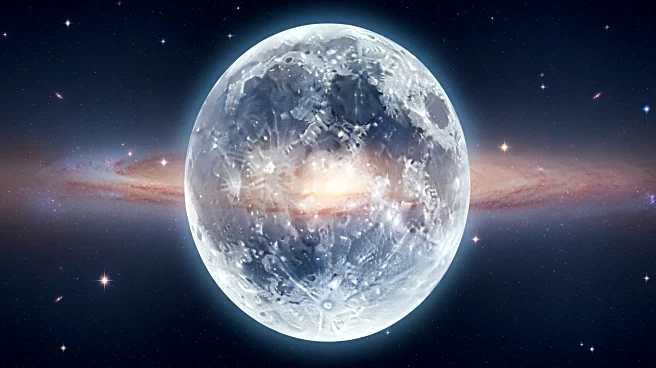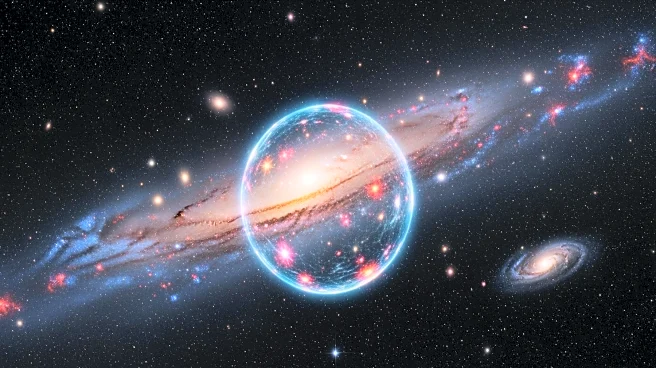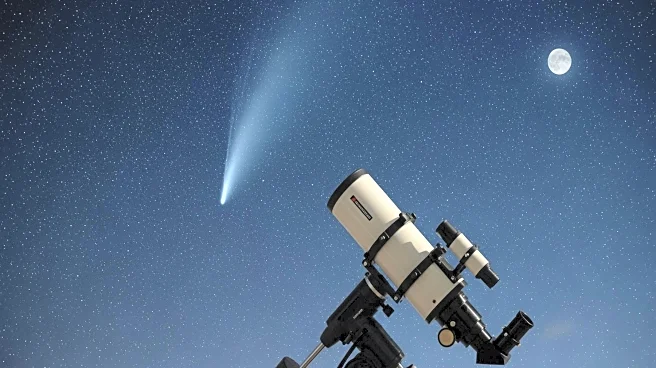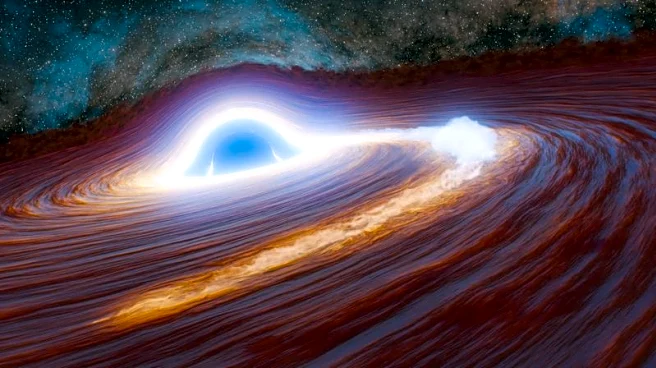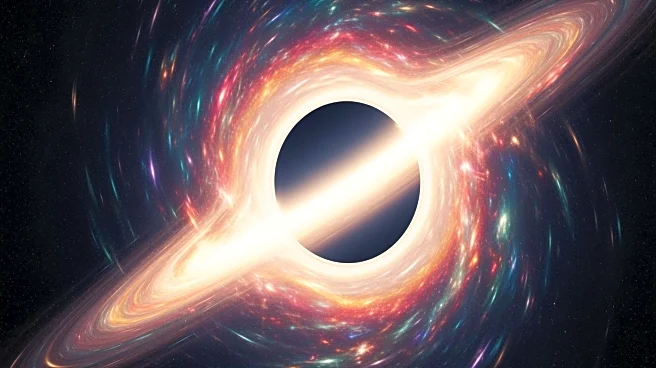What's Happening?
Astronomers from the University of Western Sydney have identified a puzzling object in the Milky Way, named G305.4-2.2, which appears as an almost perfect sphere in radio wave data. This object, unlike previously discovered Odd Radio Circles (ORCs), is not
linked to colossal explosions in distant galaxies. Researchers have ruled out several potential sources, including planetary nebulae and Wolf-Rayet bubbles, and have dismissed the possibility of it being a Dyson sphere due to the absence of infrared emissions. The object is believed to be a supernova remnant, a bubble of matter ejected when a star explodes. However, its near-perfect spherical shape is unusual, as such remnants are typically asymmetrical. The object, nicknamed Teleios, could be between 1,000 and 10,000 years old, with its distance from Earth estimated to be between 7,175 and 25,114 light-years.
Why It's Important?
The discovery of G305.4-2.2 challenges existing astronomical theories about the formation and characteristics of supernova remnants. Understanding such objects is crucial as they play a significant role in the evolution of galaxies by enriching the interstellar medium and influencing its structure. The study of this object could provide new insights into the dynamics of supernova explosions and the conditions of the interstellar medium. This research could potentially lead to a reevaluation of the estimated number of supernova remnants in the Milky Way, which currently stands at about 300, though astronomers believe there could be over 2,000.
What's Next?
Astronomers plan to conduct high-resolution, multi-frequency observations to gather more direct evidence about the nature of G305.4-2.2. These observations are expected to provide further clarity on its characteristics and confirm its status as a Type Ia supernova remnant. The findings could have broader implications for our understanding of galactic evolution and the lifecycle of stars.
